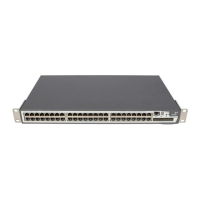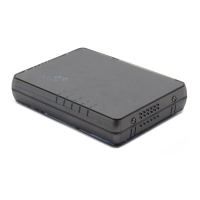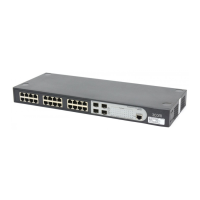RIP Configuration Commands 159
Use the following precautions when configuring a static route:
■ You cannot specify an interface address of the local Switch as the next hop
address of an static route.
■ When the destination IP address and subnet mask are both set to 0.0.0.0, this
is the configured default route. A packet is forwarded using the default route
as a last resort if no better routing match is found in the routing table.
■ As an alternative way to configure preference level, a flexible routing protocol
can be adopted.
Related command: display ip routing-table, delete static-routes all.
Example
To configure the next hop of the default route as 129.102.0.2, enter the
following:
<SW5500>system-view
System View: return to User View with Ctrl+Z.
[SW5500]ip route-static 0.0.0.0 0.0.0.0 129.102.0.2
RIP Configuration
Commands
This section describes the commands you can use to configure the Routing
Information Protocol (RIP).
When the Switch 5500G-EI runs a routing protocol, it is able to perform the
functions of a router. The term router in this section can refer either to a physical
router or to the Switch 5500G-EI running a routing protocol.
checkzero Syntax
checkzero
undo checkzero
View
RIP view
Parameter
None
Description
Use the checkzero command to check the zero field of RIP-1 packets. By default,
RIP-1 performs zero field checking.
Use the undo checkzero command to disable the checking of the zero fields.
According to the RFC1058 protocol specifications, some fields in RIP-1 packets
must be set to zero. These are called zero fields. During the zero check operation,
if a RIP-1 packet is received in which the zero fields are not zeros, it will be
rejected. Use the
checkzero command to enable or disable the zero check
operation on RIP-1.
This command does not work with RIP-2 packets, since RIP-2 packets have no zero
fields.

